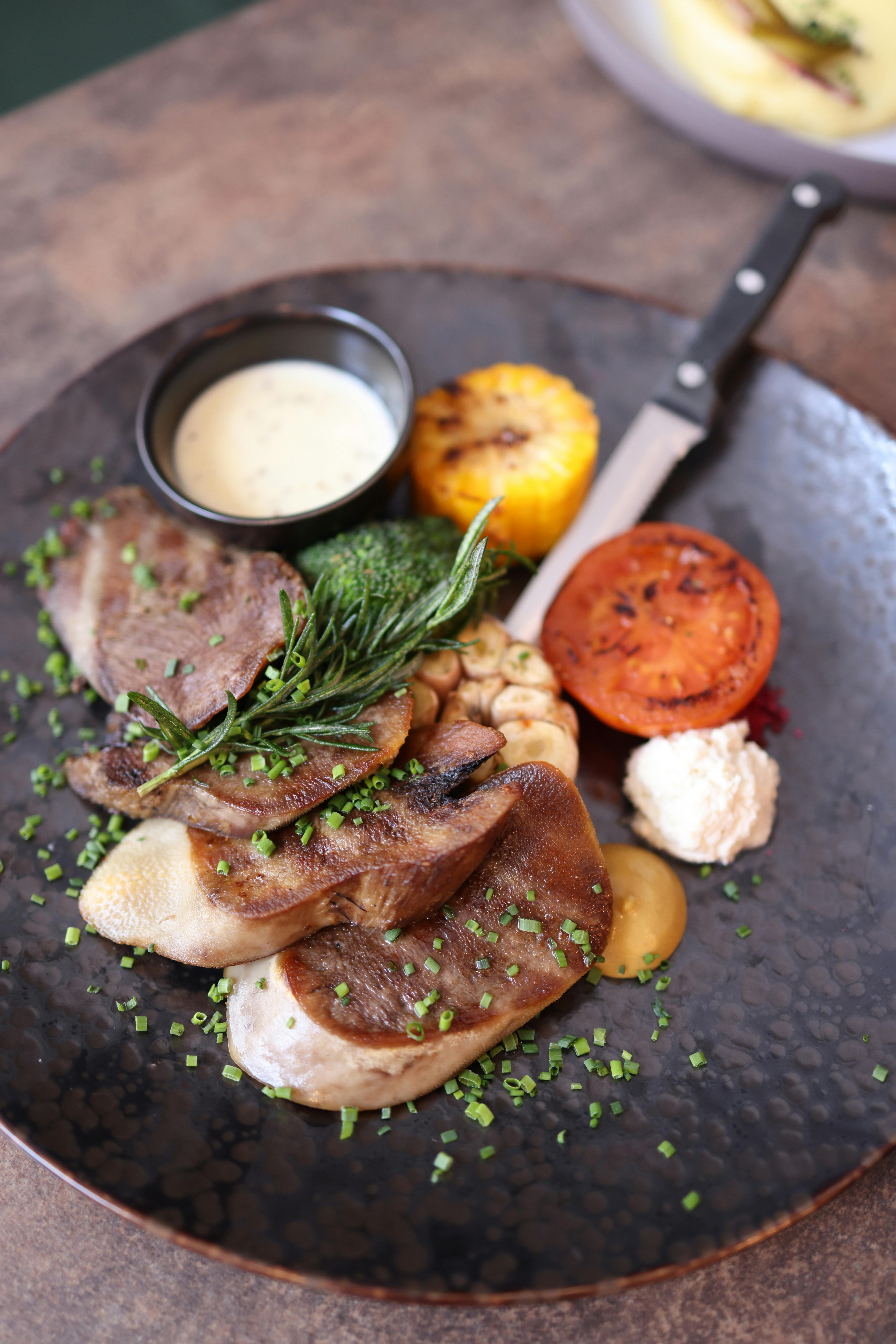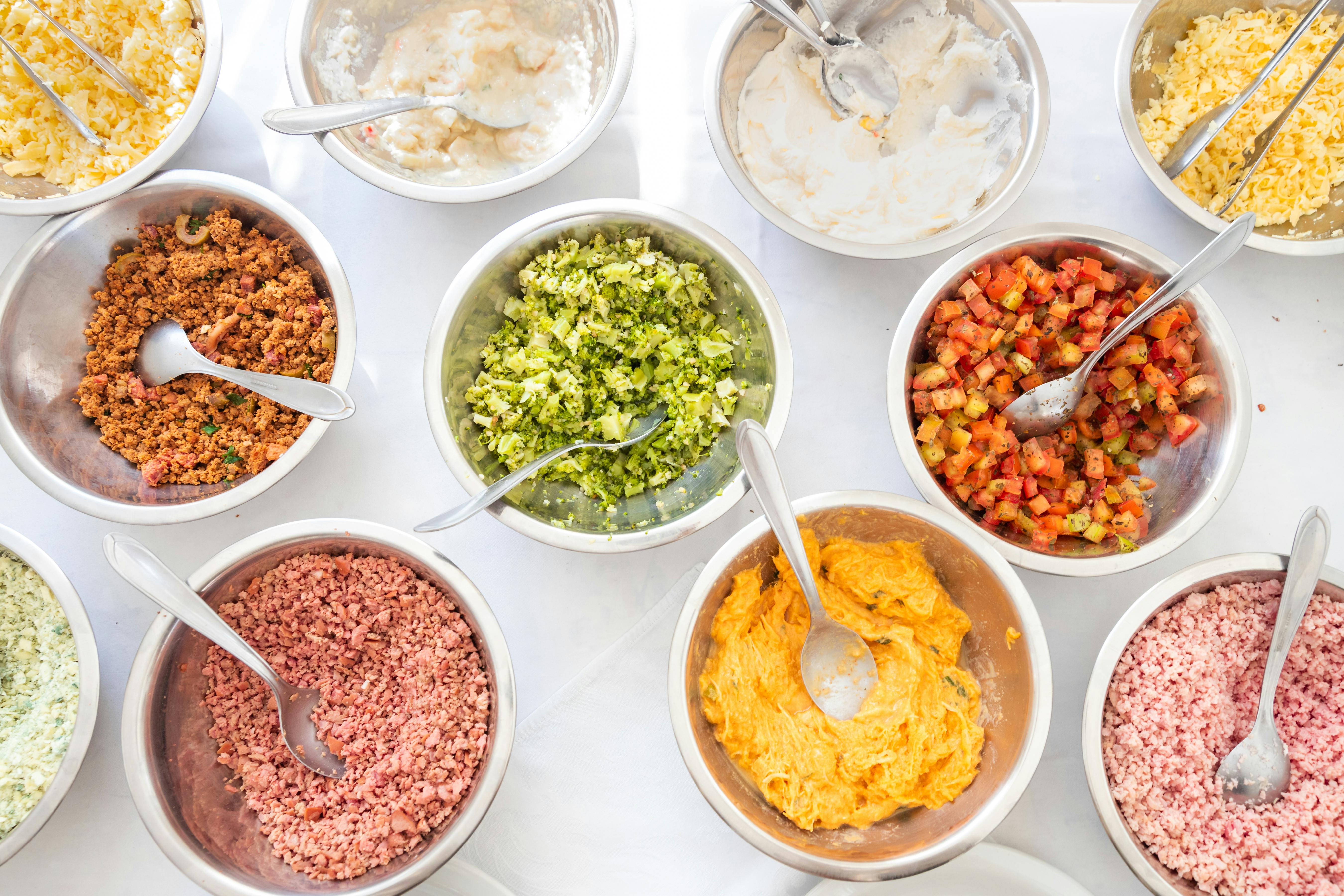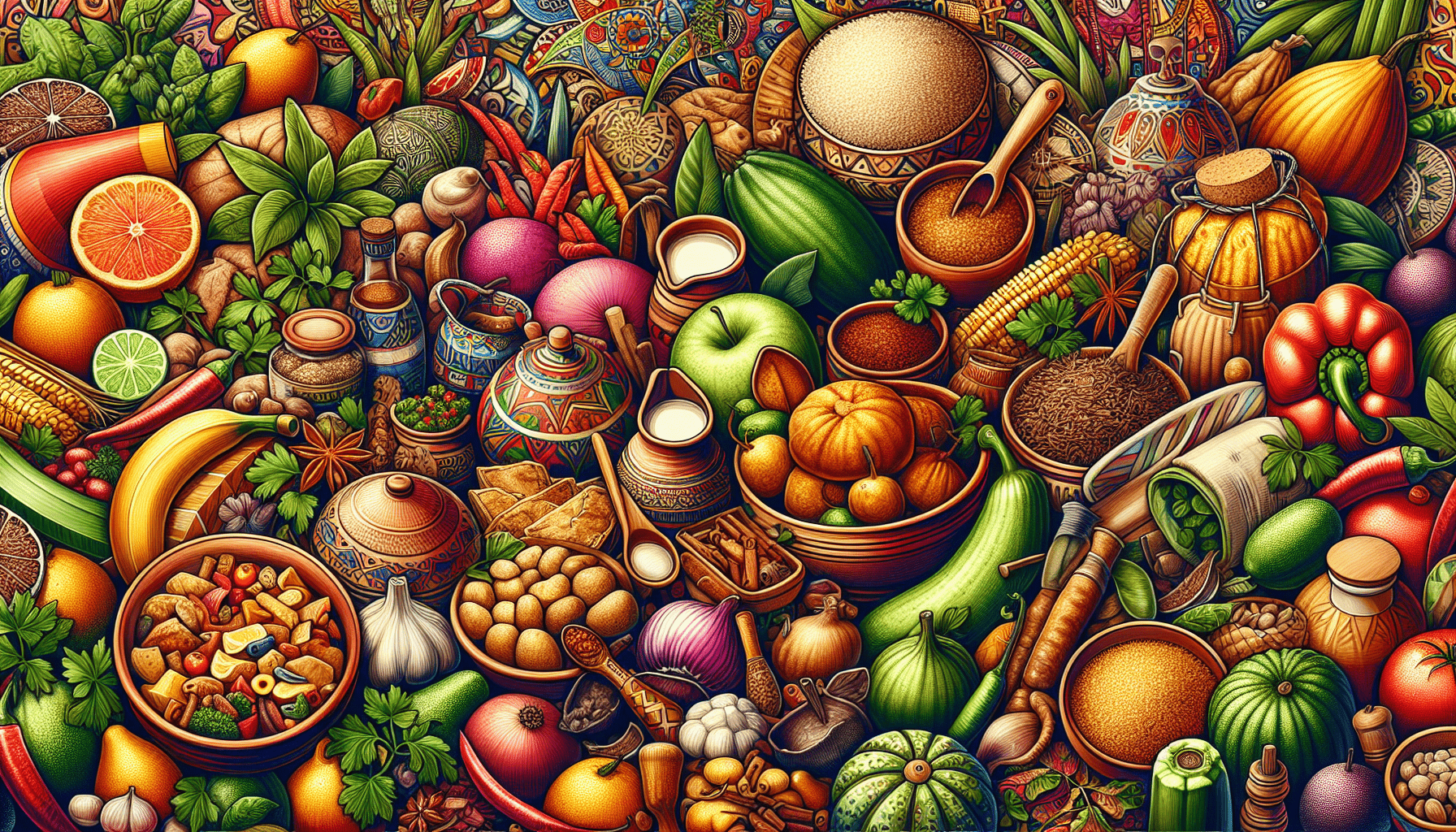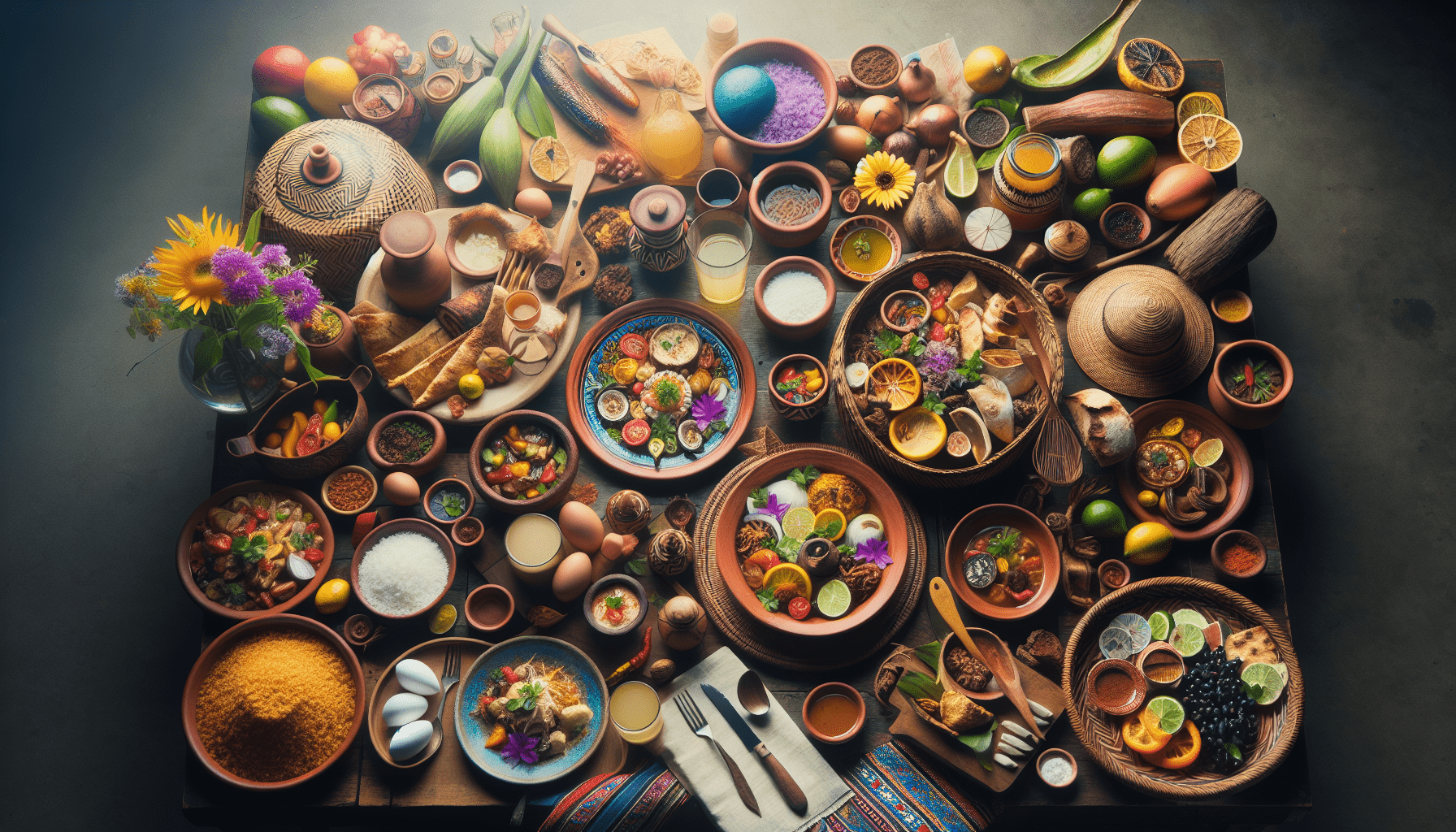Nicaragua, a country known for its stunning landscapes and vibrant culture, also boasts a rich culinary history that is often overlooked. As you embark on a culinary journey through this Central American gem, you may find yourself wondering if there are any traditional Nicaraguan dishes that truly showcase the country’s gastronomic heritage. From delectable staples like gallo pinto to mouth-watering desserts like tres leches cake, Nicaragua’s unique blend of indigenous, Spanish, and Afro-Caribbean influences are sure to tantalize your taste buds and leave you craving more. So let us uncover the hidden treasures of Nicaraguan cuisine and discover the dishes that embody the nation’s rich culinary past.

Traditional Nicaraguan Dishes
Nacatamal
One of the most iconic traditional dishes in Nicaragua is the Nacatamal. This dish is a true labor of love, as it involves a long and meticulous preparation process. The Nacatamal consists of a savory filling made of seasoned pork, wrapped in a mixture of masa (corn dough) and banana leaves. The banana leaves impart a distinct flavor to the dish and help to keep the filling moist and tender. The Nacatamal is then steamed to perfection, resulting in a flavorful and satisfying meal that is often enjoyed during special occasions and family gatherings.
Gallo Pinto
Gallo Pinto is a beloved Nicaraguan dish that is often eaten for breakfast or as a side dish. It is made by combining cooked rice and beans, along with various seasonings such as onions, garlic, and bell peppers. The dish gets its name from the speckled appearance of the rice and beans mixture, which resembles the plumage of a rooster (gallina in Spanish). Gallo Pinto is typically served with a side of eggs, ripe plantains, and a dollop of sour cream, creating a hearty and flavorful meal that is enjoyed by locals and visitors alike.
Indio Viejo
Indio Viejo is a unique Nicaraguan dish that showcases the country’s indigenous influences. It is a hearty stew made with shredded beef or chicken, onions, bell peppers, tomatoes, and a special ingredient called “achiote.” The achiote gives the dish its vibrant orange color and adds a subtle earthy flavor. The stew is thickened with masa, which gives it a rich and creamy texture. Indio Viejo is typically served with corn tortillas or rice, making it a filling and comforting meal that is enjoyed throughout Nicaragua.
Vigorón
Vigorón is a popular street food dish that originated in the city of Granada, Nicaragua. It is made with boiled yuca (cassava), topped with pickled cabbage and tomatoes, and served with crispy chicharrones (fried pork rinds). The combination of flavors and textures in Vigorón is truly unique, with the creamy yuca, tangy pickled vegetables, and crunchy chicharrones creating a harmonious blend of tastes. This dish is often enjoyed as a quick and flavorful lunch or snack, perfect for fueling up during a busy day of exploring the streets of Nicaragua.
Baho
Baho is a traditional Nicaraguan dish that originated in the town of Leon. It is a slow-cooked meat dish that consists of layers of seasoned beef, pork, and green plantains, all wrapped in banana leaves and baked to perfection. The slow cooking process allows the flavors to meld together, resulting in a tender and succulent meat that is bursting with flavor. Baho is typically served with rice and beans, and garnished with a fresh cabbage salad. This dish is often enjoyed during special occasions and family gatherings, as it requires a significant amount of time and effort to prepare.
Influences on Nicaraguan Cuisine
Indigenous Influences
Nicaraguan cuisine has been shaped by the indigenous groups that have inhabited the region for centuries. The indigenous people introduced staple ingredients such as corn, beans, and plantains, which have become key components of Nicaraguan dishes. Some traditional cooking techniques, such as the use of banana leaves for wrapping food, can also be attributed to indigenous influences. The indigenous communities have left a lasting impact on Nicaraguan cuisine, with their culinary traditions and ingredients still being celebrated and enjoyed today.
Spanish Influences
Nicaragua was colonized by the Spanish in the 16th century, and their influence on the country’s cuisine is undeniable. The Spanish introduced ingredients such as rice, wheat, and various spices, which greatly expanded the flavor profile of Nicaraguan dishes. They also brought cooking techniques such as frying and baking, which are still prevalent in Nicaraguan cuisine today. Additionally, the Spanish introduced livestock, such as cows and pigs, which became sources of meat for traditional dishes like Nacatamal and Baho.
African Influences
The arrival of African slaves during the colonial period had a significant impact on Nicaraguan cuisine. The African slaves brought with them their own culinary traditions and ingredients, which influenced the development of dishes such as Indio Viejo and Vigorón. African flavors and ingredients, such as achiote and yuca, are now integral parts of Nicaraguan cuisine. The fusion of African and indigenous influences has resulted in a diverse and flavorful culinary heritage that continues to be celebrated today.
Caribbean Influences
Nicaragua’s Caribbean coast has been influenced by the culinary traditions of Caribbean countries such as Jamaica and Haiti. This region’s dishes often feature a combination of African, indigenous, and Caribbean flavors and ingredients. Coconut milk, tropical fruits, and seafood play a prominent role in Caribbean-influenced Nicaraguan dishes. The vibrant and spicy flavors of dishes like Rondón (a Caribbean seafood stew) and Rundown (a dish made with fish and coconut milk) have become popular along the coast, showcasing the unique fusion of cultures in this region.

Unique Ingredients in Nicaraguan Cuisine
Cacao
Nicaragua is known for its high-quality cacao, which is used to produce delicious and aromatic chocolate. Cacao has been cultivated in Nicaragua for centuries and has deep roots in the country’s history. It is used in traditional beverages like hot chocolate and is also added to desserts, such as tres leches cake, to enhance the flavor. The unique climate and fertile soil of Nicaragua allow for the cultivation of cacao beans with distinct flavors, making them highly sought after by chocolate connoisseurs around the world.
Corn
Corn is a staple ingredient in Nicaraguan cuisine and plays a central role in many traditional dishes. Corn is used to make masa, which is the base of dishes like Nacatamal and Gallo Pinto. It is also ground into flour to make tortillas, tamales, and various types of bread. Corn in Nicaragua comes in a variety of sizes and colors, each with its own distinct flavor and texture. The versatility of corn in the Nicaraguan kitchen allows for a wide range of delicious and satisfying dishes.
Plantains
Plantains are another staple ingredient in Nicaraguan cuisine and are used in both savory and sweet dishes. Green plantains are often boiled or fried and served as a side dish, while ripe plantains are fried or baked and served as a dessert. Plantains can also be mashed and used as a filling for stuffed pastries called bollitos. The versatility of plantains allows for a diverse range of flavors and textures in Nicaraguan dishes, making them a beloved and essential ingredient in the local cuisine.
Yuca
Yuca, also known as cassava, is a starchy root vegetable that is widely used in Nicaraguan cuisine. Yuca can be boiled, fried, or mashed, and is often served as a side dish or used as an ingredient in soups and stews. Its mild flavor and creamy texture make it a versatile ingredient that pairs well with a variety of flavors. Yuca is also used to make a traditional Nicaraguan dish called Vigorón, where it is boiled and served with pickled cabbage and crispy chicharrones, creating a delightful combination of tastes and textures.
Seafood
With its extensive coastline, Nicaragua is blessed with an abundance of fresh seafood. The country’s Pacific and Caribbean coasts offer a wide variety of fish and shellfish, which are key ingredients in many Nicaraguan dishes. Seafood is often marinated in citrus juices and seasoned with a blend of spices, resulting in vibrant and flavorful dishes like ceviche and rondón. From succulent shrimp to tender snapper, the seafood in Nicaragua is both delicious and a testament to the country’s coastal culinary traditions.
Regional Variations in Nicaraguan Cuisine
Pacific Coast Cuisine
The cuisine of Nicaragua’s Pacific coast is known for its rich and flavorful dishes. Seafood plays a prominent role in this region, with dishes like ceviche and fish prepared in numerous ways. The Pacific coast is also renowned for its plantain-based dishes, such as maduros (ripe plantains) and tostones (fried green plantains). The use of fresh local ingredients and traditional cooking methods results in dishes that showcase the diverse flavors and culinary heritage of the Pacific coast.
Caribbean Coast Cuisine
The Caribbean coast of Nicaragua has a distinct culinary identity that reflects the cultural diversity of the region. Creole and Afro-descendant communities have influenced the cuisine, resulting in dishes with bold and spicy flavors. Coconut milk, tropical fruits, and seafood are common ingredients in Caribbean coast cuisine. Traditional dishes include rondón, a seafood stew made with coconut milk, and rundown, a fish and coconut milk dish. The cuisine of the Caribbean coast is a fusion of African, indigenous, and Caribbean influences, creating a unique and vibrant culinary experience.
Northern Region Cuisine
The northern region of Nicaragua, bordering Honduras, has its own distinct culinary traditions. The cuisine in this region features hearty dishes that are influenced by both indigenous and Honduran flavors. Traditional dishes like nacatamales and baho are popular in the northern region. The use of root vegetables like yuca and plantains is prevalent, and dishes often incorporate locally sourced ingredients from the fertile regions surrounding the Coco River. The cuisine of the northern region is known for its robust flavors and comforting dishes that reflect the cultural diversity of the area.
Central Region Cuisine
The central region of Nicaragua, home to the capital city of Managua, has a diverse culinary scene that reflects the mix of cultures and influences in this area. Traditional dishes like gallo pinto and indio viejo are commonly enjoyed in the central region. The cuisine here incorporates ingredients from all over the country, with a focus on flavor and variety. The central region is also known for its street food culture, with dishes like quesillo and vigorón being popular choices among locals and visitors alike.

Celebration and Festival Foods
Chicha
Chicha is a traditional Nicaraguan beverage that is often enjoyed during celebrations and festivals. It is a fermented corn drink that has been consumed for centuries in Nicaragua and other parts of Central and South America. The process of making chicha involves soaking corn kernels in water, allowing them to ferment naturally, and then straining the liquid. The resulting beverage is mildly sweet with a slight tang and is often served cold. Chicha is valued not only for its refreshing taste but also for its cultural significance, as it is closely associated with traditional festivities in Nicaragua.
Rosquillas
Rosquillas are a popular Nicaraguan snack that is commonly enjoyed during festivals and holidays. These small, ring-shaped cookies are made with a dough that includes ingredients such as cornmeal, cheese, and lard. The dough is then shaped into rings and baked until golden and crispy. Rosquillas can be sweet or savory, depending on the ingredients used. Sweet rosquillas are often dusted with powdered sugar or drizzled with a syrup made of cane sugar, while savory rosquillas may include spices such as cumin or paprika. These delicious treats are a beloved part of Nicaraguan culinary traditions, bringing joy and sweetness to special occasions.
Tres Leches Cake
Tres Leches Cake is a decadent dessert that is often served during celebrations and special events in Nicaragua. This moist and rich cake gets its name from the three types of milk used in its preparation: evaporated milk, sweetened condensed milk, and whole milk. The cake is soaked in the milk mixture, which gives it a creamy and tender texture. Tres Leches Cake is typically topped with whipped cream and garnished with fresh fruit. It is a beloved dessert that is synonymous with celebration and indulgence in Nicaragua.
Cajeta
Cajeta is a traditional caramel sauce that is commonly used as a topping or filling in Nicaraguan desserts. It is made by slowly cooking condensed milk with sugar until it thickens and turns a deep golden color. The resulting caramel sauce is smooth, creamy, and incredibly indulgent. Cajeta is commonly drizzled over ice cream, flan, or tres leches cake, adding a rich and sweet flavor to the desserts. It is also enjoyed as a spread on bread or as a dip for fresh fruits. The lusciousness of cajeta makes it a delightful addition to any celebration or festive gathering.
Street Food in Nicaragua
Quesillo
Quesillo is a popular street food snack in Nicaragua that is enjoyed by locals and visitors alike. It is a simple yet delicious dish made with a tortilla filled with string cheese, pickled onions, and a drizzle of sour cream. The tortilla is then rolled up and served warm. The combination of the melty cheese, tangy onions, and creamy sour cream creates a delightful blend of flavors and textures. Quesillo is a quick and satisfying snack that can be found at street food stalls throughout Nicaragua, offering a taste of the country’s culinary traditions on the go.
Vigorón
Vigorón, mentioned earlier as a traditional Nicaraguan dish, is also a popular street food option. It is a perfect choice for those looking for a quick and flavorful meal on the streets of Nicaragua. The combination of boiled yuca, pickled cabbage and tomatoes, and crispy chicharrones creates a harmonious blend of tastes and textures that is sure to satisfy your cravings. Vigorón is typically served in a banana leaf or on a plate, making it easy to enjoy while exploring the vibrant street food scene of Nicaragua.
Nísperos en Miel
Nísperos en miel is a unique street food snack that is often found in markets and street stalls in Nicaragua. Nísperos are small, orange fruits with a sweet and tangy flavor. They are typically cooked in a sweet syrup made from cane sugar, resulting in a sticky and luscious treat. Nísperos en miel can be enjoyed on their own or served with a scoop of ice cream for a refreshing and indulgent dessert. This street food snack is a must-try for those looking to explore the diverse flavors of Nicaragua.
Güirila
Güirila is a traditional Nicaraguan corn cake that is often enjoyed as a street food snack. It is made by grinding fresh corn kernels and mixing the resulting cornmeal with water and salt. The mixture is then spread onto a hot griddle and cooked until golden brown and slightly crispy on the outside. Güirila is typically served with sour cream, cheese, and pickled onions, creating a delicious and satisfying snack that can be enjoyed on the go. Its simplicity and comforting flavors make güirila a popular choice among street food enthusiasts in Nicaragua.

Influential Chefs in Nicaraguan Cuisine
Héctor Murillo
Héctor Murillo is a renowned Nicaraguan chef who has played a significant role in promoting Nicaraguan cuisine both locally and internationally. He is known for his innovative approach to traditional dishes, combining traditional flavors with modern techniques and presentations. Murillo has worked in acclaimed restaurants and has represented Nicaragua in various culinary competitions and events. His passion and dedication to showcasing the rich culinary heritage of Nicaragua have made him an influential figure in the country’s culinary scene.
Luis Alejandro López Méndez
Luis Alejandro López Méndez, commonly known as Chef X, is a Nicaraguan chef who has gained recognition for his unique approach to fusion cuisine. Chef X incorporates traditional Nicaraguan ingredients and flavors into his dishes, while also drawing inspiration from other culinary traditions from around the world. His innovative and creative dishes have garnered attention both locally and internationally, earning him a reputation as one of Nicaragua’s most influential chefs. Chef X’s commitment to pushing the boundaries of Nicaraguan cuisine has made him a trailblazer in the industry.
Dario Benítez
Dario Benítez is a celebrated Nicaraguan chef who has made a name for himself through his dedication to promoting traditional Nicaraguan cuisine. He is known for his use of locally sourced ingredients and traditional cooking techniques, which allow him to create dishes that are true to the flavors and culinary heritage of Nicaragua. Benítez has worked in renowned restaurants both within Nicaragua and in other countries, and he has been recognized for his commitment to preserving and showcasing the rich culinary traditions of his homeland.
Historical Significance of Nicaraguan Cuisine
Pre-colonial Era
Before the arrival of the Spanish colonizers, the indigenous communities in Nicaragua had already established a rich culinary tradition. Corn, beans, and squash were staple ingredients that formed the basis of their diet. These ingredients were often combined to create nourishing and flavorful dishes. The indigenous people also used traditional cooking techniques such as grilling, boiling, and roasting. Their culinary traditions laid the foundation for Nicaraguan cuisine, which has evolved over time but still carries the influence of these ancient cooking practices.
Spanish Colonization
The Spanish colonizers brought new ingredients and cooking techniques to Nicaragua, fundamentally changing the country’s culinary landscape. They introduced livestock such as cows and pigs, which became sources of meat for traditional dishes. They also brought rice, wheat, and various spices, which expanded the flavors and ingredients used in Nicaraguan cuisine. The Spanish also introduced new cooking methods such as frying and baking, which are still prevalent in Nicaraguan cuisine today. The influence of Spanish colonization on Nicaraguan cuisine is profound and can still be seen in many dishes enjoyed today.
Independence and National Identity
Nicaragua’s struggle for independence and the subsequent years of political and social change have had a significant impact on the country’s culinary identity. As Nicaragua sought to establish its own national identity, the preservation and promotion of traditional cuisine became an important aspect of cultural preservation. Recipes and cooking techniques were passed down through generations, ensuring that traditional dishes remained a vibrant part of Nicaraguan culture. Today, Nicaraguan cuisine is seen as an important part of the country’s national heritage and is celebrated as a symbol of Nicaraguan identity.

Restaurants and Food Tours in Nicaragua
La Cocina de Doña Hayde
La Cocina de Doña Hayde is a renowned restaurant in Managua that offers an authentic culinary experience. It specializes in traditional Nicaraguan dishes that highlight the rich flavors and ingredients of the country. The restaurant prides itself on using locally sourced and organic ingredients to ensure the highest quality and authenticity in their dishes. From classic Nacatamal to flavorful Gallo Pinto, La Cocina de Doña Hayde offers a wide variety of traditional Nicaraguan dishes that are loved by locals and tourists alike.
Restaurante El Bistec
Restaurante El Bistec is a popular dining destination located in the city of Granada. This restaurant is known for its innovative take on traditional Nicaraguan cuisine. The menu features a combination of classic Nicaraguan dishes and modern creations, all made with locally sourced ingredients. Restaurante El Bistec offers a vibrant dining experience, with a cozy and welcoming atmosphere that is perfect for enjoying a delicious meal in the heart of Granada.
Nicaragua Gastronómica Tours
For those looking to explore the diverse flavors of Nicaragua, Nicaragua Gastronómica Tours offers a unique culinary adventure. These guided tours take visitors on a journey through local markets, street food stalls, and traditional restaurants, providing an immersive experience in Nicaraguan cuisine. The tours allow participants to learn about the history and cultural significance of different dishes, as well as taste a wide variety of traditional Nicaraguan foods. Nicaragua Gastronómica Tours offer a fun and educational way to discover the rich culinary heritage of Nicaragua.
Promoting Nicaraguan Cuisine
Nicaragua Gourmet
Nicaragua Gourmet is an annual food festival that celebrates the diversity and richness of Nicaraguan cuisine. The festival brings together food producers, chefs, and food enthusiasts from all over the country to showcase the best of Nicaraguan gastronomy. Attendees can taste a wide variety of traditional dishes, as well as innovative creations that highlight local ingredients and flavors. Nicaragua Gourmet aims to promote and preserve Nicaraguan culinary traditions while also encouraging creativity and innovation in the local food industry.
Festival Gastronomía Internacional
Festival Gastronomía Internacional is an event that brings together chefs and food experts from around the world to showcase their culinary talents. The festival includes cooking demonstrations, workshops, and tastings, allowing attendees to discover new flavors and techniques from different cuisines. Nicaraguan chefs have the opportunity to participate in the festival, showcasing the unique flavors and ingredients of their country. Festival Gastronomía Internacional promotes cultural exchange through food and helps to put Nicaraguan cuisine on the global culinary map.
Comidas y Bebidas de Nicaragua
Comidas y Bebidas de Nicaragua is an organization dedicated to promoting Nicaraguan cuisine both nationally and internationally. The organization works to preserve traditional recipes and cooking techniques while also encouraging innovation and creativity in the culinary industry. Comidas y Bebidas de Nicaragua organizes events, cooking classes, and workshops to educate people about Nicaraguan cuisine and its cultural significance. The organization also works closely with local producers to promote sustainable and responsible practices in the food industry. Through their efforts, Comidas y Bebidas de Nicaragua aims to elevate the status of Nicaraguan cuisine and foster pride in the country’s culinary heritage.
